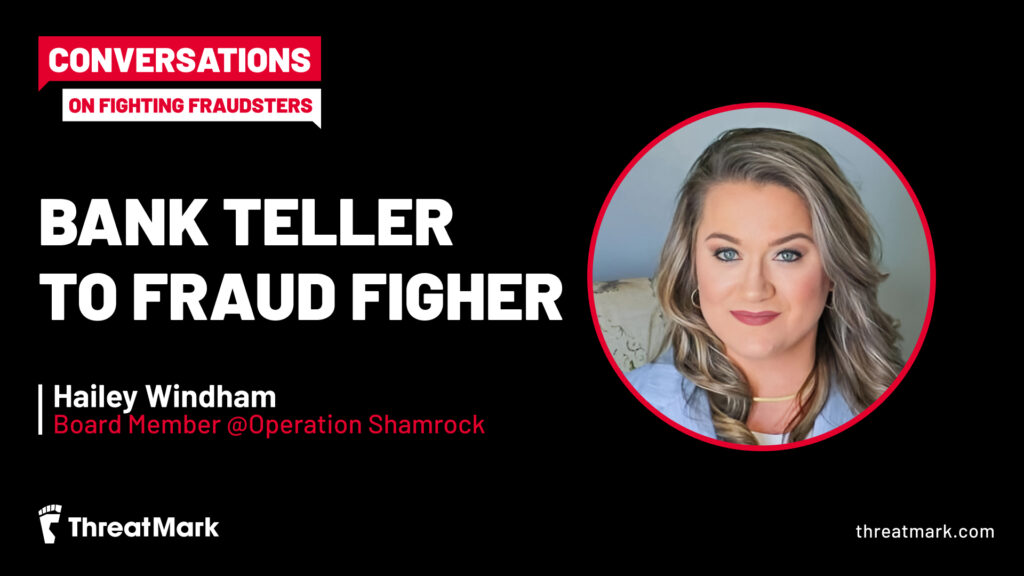
Making Scams Relatable: How Human Impact Strengthens Fraud Teams
Why turning fraud data into human context transforms fraud prevention from a technical task into a mission.
Fraud analysts spend their days scanning alerts, logs, and dashboards. Every suspicious transaction appears as numbers and flags. Yet behind each of those data points is a person—pressured, confused, or manipulated into acting against their own interests.
Fraud today is no longer just a technical war. It’s a battle over psychology, with scammers preying on fear, trust, authority, and even love. That’s why the strongest defenses combine advanced technology with a human-centered approach.
Why Relatability Matters
When prevention is framed only as data management, teams risk losing sight of what really matters. Fraud fighters are not just chasing better metrics. They’re protecting people’s life savings, their health, and sometimes their lives.
Research underscores why keeping the human narrative in view matters. In one study on antiphishing training, participants exposed to narrative-based examples showed higher engagement, stronger confidence, and better detection outcomes than those trained with raw data alone.
Relatability, even in highly professional settings, is not a “soft” factor. It delivers tangible benefits for fraud prevention and is essential for fraud analyst engagement.
- Engagement and morale: Analysts who connect their work to real-world outcomes are more motivated and less prone to burnout. Knowing that an alert represents a real person being pressured or deceived gives meaning to the task, turning routine casework into a mission. As a fraud specialist from ING puts it: “What you do absolutely matters to people and that gives you a lot of satisfaction.”
- Better problem-solving: When fraud is framed as lived scenarios rather than anomalies, analysts think more creatively and spot subtle links faster. Stories activate intuition and memory in ways that raw numbers cannot, improving recognition of patterns across cases. For example, what looks like a “series of escalating transfers” suddenly clicks when framed as investment grooming.
- Reduced alert fatigue: Context cuts through noise. A flood of generic flags can wear teams down, but when an alert is tied to a human consequence, it feels urgent and worth attention. That perspective helps analysts triage more effectively and sustain focus.
Making the human impact visible keeps analysts motivated, sharpens detection accuracy, and strengthens collaboration across teams. And that’s a tangible advantage in the daily fight against fraud.
Using Human Stories in Fraud Prevention
The most effective way to bring this relatability into daily operations is through stories. Human stories in fraud prevention are memorable. Our brains are wired to retain narratives far better than abstract information, and neuroscience backs this up.
A 2021 fMRI study at UC Davis found that participants remembered far more details when stories were presented as coherent narratives rather than unrelated events. Research by Paul Zak (2015) confirmed the same principle: compelling narratives not only hold attention but also trigger oxytocin release, a neurochemical linked to empathy and trust. Participants exposed to stories showed higher emotional engagement and were more likely to act on the message than those given non-narrative content.
For fraud prevention, the implications are direct. Analysts overwhelmed with generic alerts may forget anomalies that appear isolated. But when “multiple transfers to a new payee” is reframed as “a retiree persuaded by a fake investment adviser,” it sticks. These relatable fraud examples don’t just make individual cases memorable; they create mental templates that help analysts recognize similar patterns in future cases.
Think about it this way:
- Data tells you what happened.
- Stories show you why it happened.
And in fraud prevention, knowing “why” is what enables faster, more accurate, and more human interventions.
The Psychological Toll on Fraud Fighters
For team leaders, reminding analysts that “people’s life savings depend on you” can be a powerful motivator. But it also creates pressure. When analysts see the people behind the data, they also absorb the pain that comes with it. A suspicious transfer is no longer just an outlier. It’s a retiree under pressure, a young professional manipulated into sending money, a family’s savings disappearing. That awareness strengthens prevention but leaves an emotional mark.
One fraud specialist recalled speaking with a woman in tears after being scammed: “She told me, ‘I have no right to happiness,’ (…) Something like that really touches you.”
This kind of stress is well documented in other high-pressure fields, from compliance to AML, where alert volumes and ethical demands often lead to burnout and high turnover. Fraud prevention carries the same risks. Analysts face productivity targets and management pressure, while also dealing with victims’ trauma.
As PJ Rohall, Co-Founder of About Fraud puts it: “Fraud prevention can be stressful enough with productivity goals and management pressures. But when fraud fighters also have to support victims who’ve experienced trauma, it adds another layer of difficulty. They often need to navigate tough conversations, balancing empathy with delivering bad news about financial losses.”
For institutions and team leaders, supporting fraud specialists means more than highlighting the value of their work. It requires systems that help them manage the emotional toll.
Providing counseling access, peer debriefing sessions, and open communication channels strengthens both resilience and retention. Without that support, analysts can become exhausted, make slower decisions, miss subtle cues, and ultimately leave, taking valuable expertise with them.
As Hailey Windham points out in the Behind Enemy Lines interview: “If you’re a C-suite executive and haven’t talked to the actual fraud person, not just their manager, you’re missing an important conversation.” It’s a reminder that real support starts with listening to the people on the front lines of fraud.
How Relatable Fraud Examples Improve Banks’ Operations
Taking care of fraud analysts by making their work relatable while also giving them tools to handle the pressure delivers clear operational value, from fraud team training to leadership strategy.
- Hiring and retention: Framing fraud prevention as protecting people, not just chasing anomalies, is a powerful differentiator in drawing and retaining top talent. Analysts want to feel their work matters, and institutions that highlight this mission stand out in a competitive job market.
- Training and onboarding: Nothing accelerates learning like relatable fraud examples. New analysts grasp patterns faster when they’re anchored in human scenarios—a romance scam escalating into transfers, a customer on the phone with an impersonator—rather than abstract rules and thresholds. Stories stick; lists of anomalies don’t.
- Collaboration: Fraud, compliance, and customer support often speak different “languages.” Stories bridge those gaps. Saying “this looks like the fake bank employee case we saw last week” is far clearer than referencing “rule 47 flagged event.” A shared narrative makes cross-team coordination smoother.
- Leadership decisions: Dashboards are useful, but they flatten fraud into numbers. Executives make sharper strategic calls when they see fraud as lived experience. Human stories in fraud prevention give leaders a clearer picture of evolving threats and why investing in disruption tools matters.
- Culture: Teams that see themselves as protecting people, not just processing alerts, work with greater purpose and resilience. Fraud fighting is demanding, but when analysts understand the real lives they’re safeguarding, it fuels motivation to learn while reducing burnout.
From Data to Human-Centered Defense
Fighting fraud today is often described as a technical arms race: better models, more automation, faster responses. But it’s more than that. Technology like ThreatMark’s behavioral intelligence is valuable not only because it improves detection accuracy, but because it helps fraud fighters see patterns as lived scenarios, not just anomalies on a dashboard. It gives analysts the context to build narratives around likely fraud cases, making their work both sharper and more meaningful.
Fraud isn’t a dashboard problem, and this is where the human side comes back into focus. It’s a deeply harmful social problem that can strike anyone, regardless of age, background, or experience. When technology empowers analysts to make better decisions and understand fraud in human terms, it reflects the true nature of the fight: not just defending systems, but protecting people.
That’s when fraud prevention stops being a numbers game and becomes a mission.



